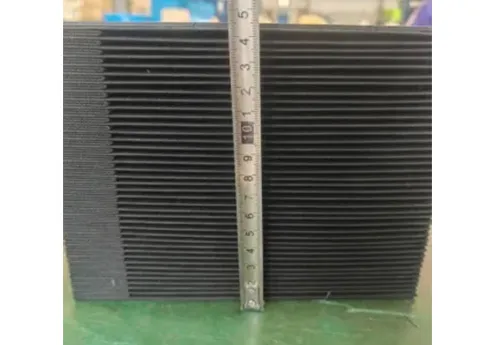drag chain conveyor
Understanding Drag Chain Conveyors A Comprehensive Overview
Drag chain conveyors, also known as drag chain systems or drag chain conveyors, are integral components in many industrial applications, particularly in material handling processes. These conveyors are specifically designed to transport bulk materials across horizontal and inclined paths. Their robust and simple design allows them to handle a variety of materials, including heavy, abrasive, and bulk products, making them a popular choice in industries such as mining, agriculture, and manufacturing.
How Drag Chain Conveyors Work
The fundamental working principle of a drag chain conveyor involves the use of a chain, which is pulled through a trough or a casing. This chain consists of interconnected links that are fitted with attachments (or paddles) designed to drag the material along the conveyor path. When the chain moves, these attachments scoop up the bulk materials from the trough and transport them to the designated discharge point.
The basic components of a drag chain conveyor include
1. Chain The heart of the conveyor, made of robust materials to withstand wear and tear. 2. Trough A protective channel where the material is housed and transported. 3. Drive Unit Typically located at one end, this unit powers the chain’s movement. 4. Discharge Points Locations where materials are released from the conveyor.
Advantages of Drag Chain Conveyors
One of the most significant advantages of drag chain conveyors is their ability to transport material effectively over long distances. They can be customized to handle various capacities and configurations, accommodating the specific needs of any industrial setup. Here are some notable benefits of using drag chain conveyors
drag chain conveyor

1. Durability Built to last, drag chain conveyors can handle heavy loads and abrasive materials without significant wear. 2. Versatility They can convey a wide range of materials, including powders, grains, and even larger bulk items like rocks and ores. 3. Space Efficiency Their design can be more compact than alternative conveyor types, allowing for better use of floor space in factories and warehouses. 4. Minimal Maintenance Once installed, these conveyors require relatively low maintenance due to fewer moving parts, resulting in reduced downtime.
Applications of Drag Chain Conveyors
Drag chain conveyors have many applications across various industries. Here are some common uses
1. Mining In this industry, drag chain conveyors are often used to transport ores and minerals from extraction sites to processing plants. 2. Agriculture For moving grains, seeds, and fertilizers, drag chain systems provide an efficient means to manage bulk materials. 3. Manufacturing They play a crucial role in assembly and distribution lines, transporting finished products or components between different workstation areas. 4. Waste Management Drag chain conveyors are used to handle and process waste materials effectively, thereby aiding in recycling operations.
Conclusion
Drag chain conveyors play a vital role in facilitating efficient material handling across various industries. Their robust design, versatility, and longevity make them an excellent choice for companies looking to optimize their operations. As industries continue to evolve and adapt, the demand for effective bulk material handling solutions like drag chain conveyors will likely grow. Investing in high-quality drag chain conveyor systems can lead to enhanced productivity, lower operational costs, and improved overall efficiency in material transport processes.
In conclusion, understanding the significance and functionality of drag chain conveyors reveals their undeniable impact on modern industrial operations. As technology continues to advance, these systems are expected to incorporate smarter features, further enhancing their efficiency and reliability in handling bulk materials efficiently. Whether you are in mining, agriculture, manufacturing, or waste management, drag chain conveyors are essential to the fabric of your material handling operations.








